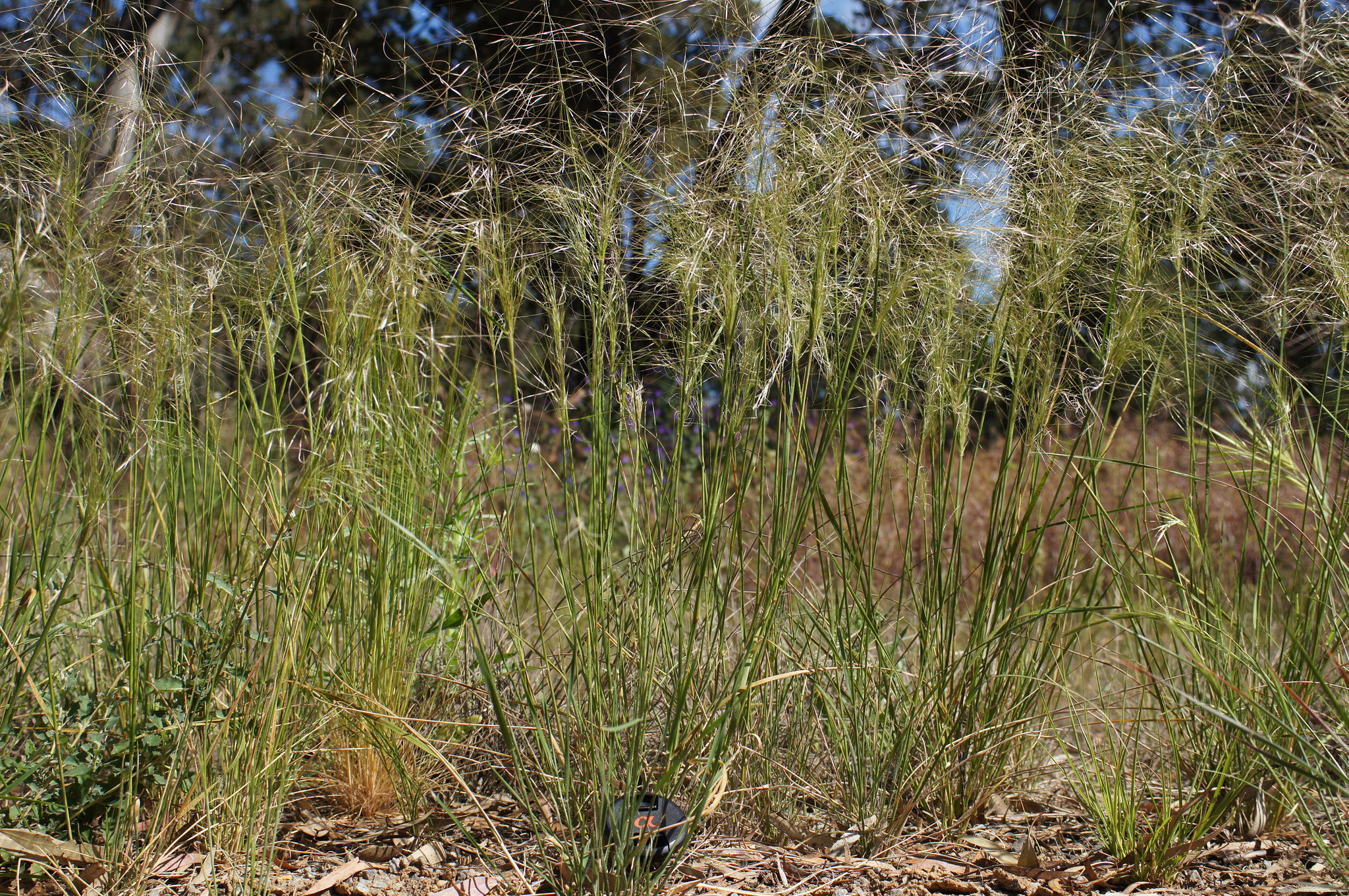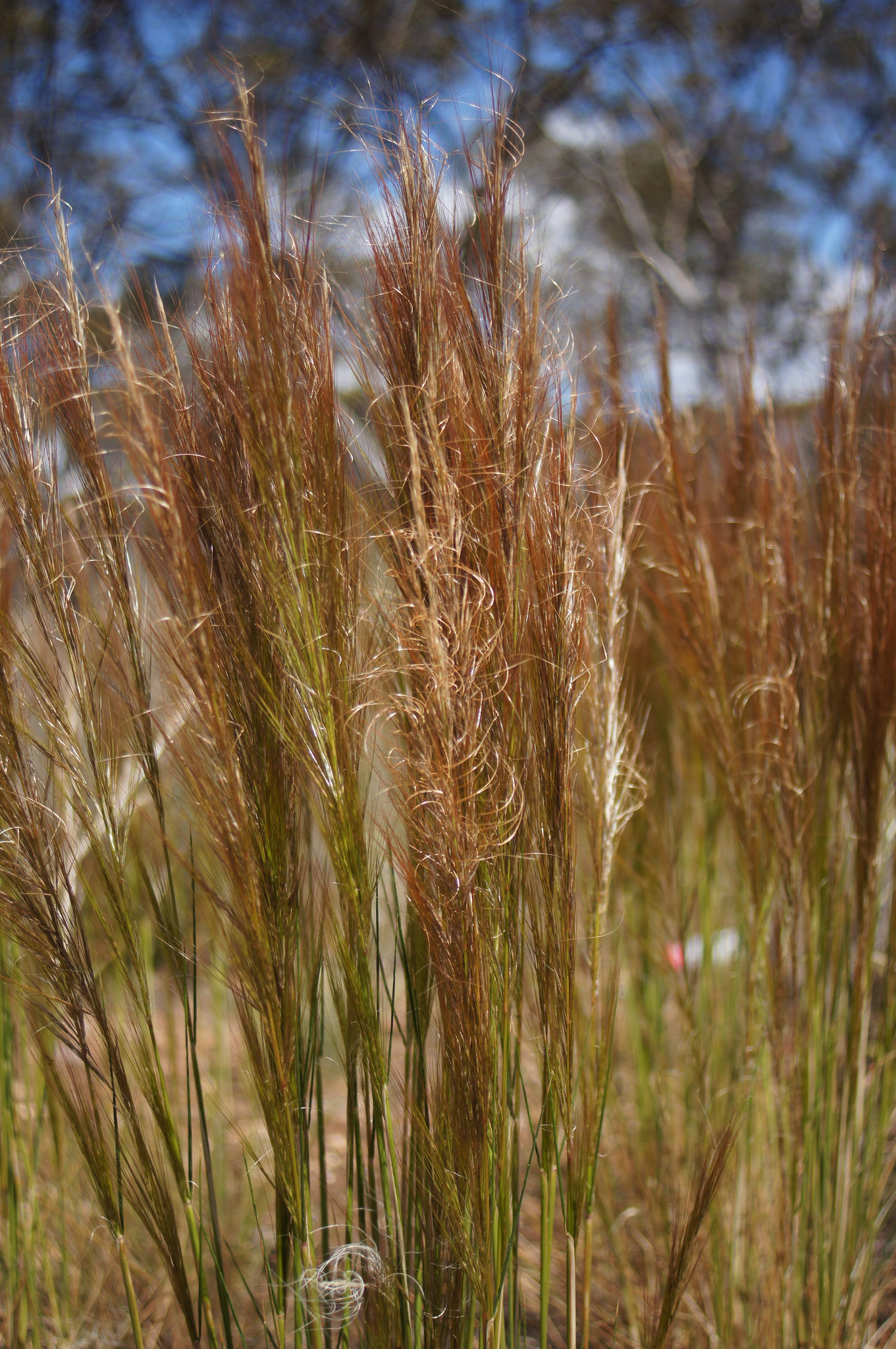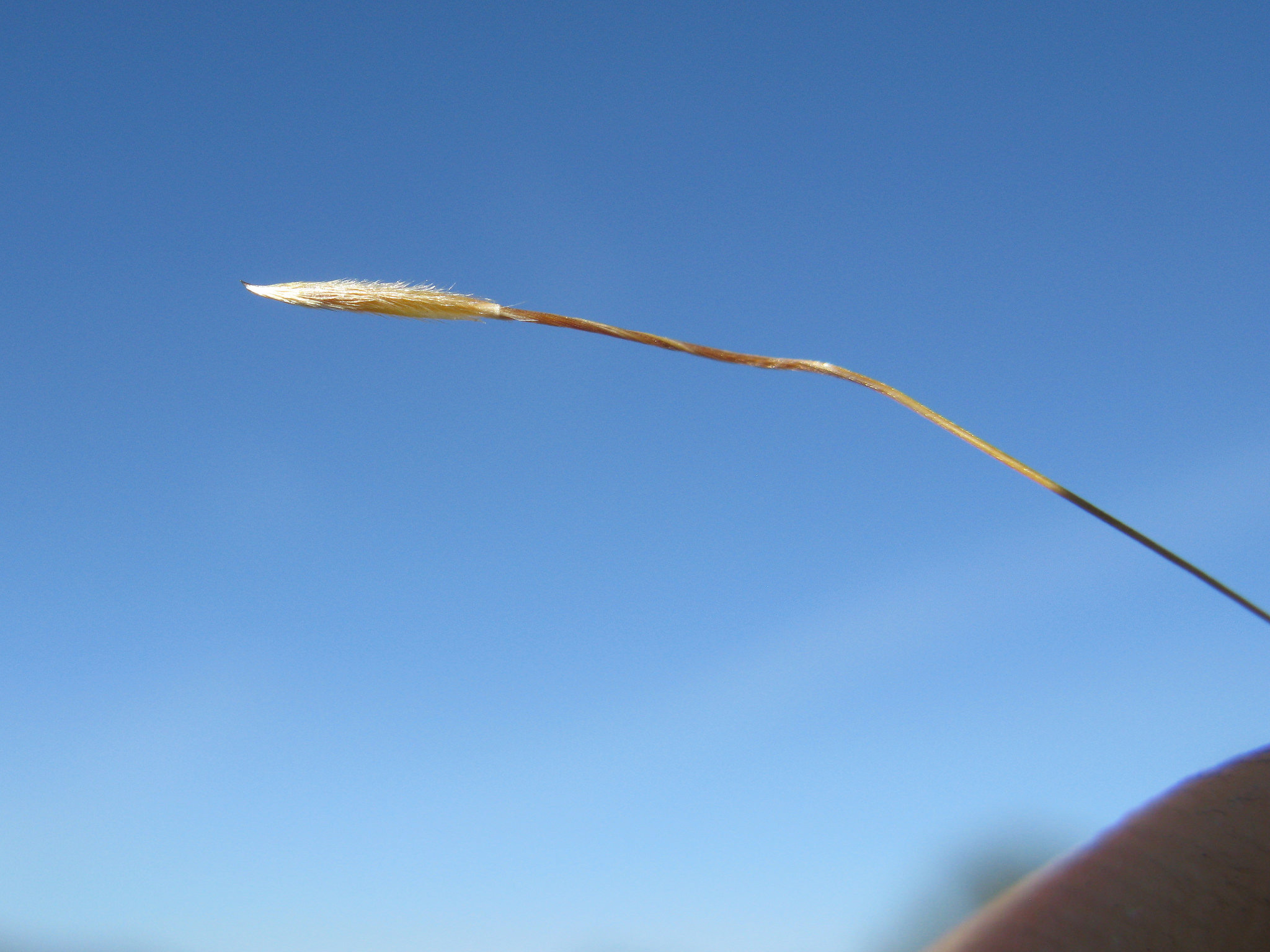



Knotty Spear-grass
Austrostipa nodosa
Loosely tufted grass to 1 m tall, with stout erect flowering stems. Flat or inrolled leaves are coarse, rough to the touch, to 30 cm long. Short hairy leaf-collar (ligule) often bordered by a tuft of leaves but rarely with a thickened ear-like projection (auricle). Slender sparse seedheads to 30 cm. Seeds are purplish, drying to golden brown and lightly covered with short white hairs, and a curved sickle-shaped bristle or awn 45-90 mm long.
| Details | |
|---|---|
| Flora Type | Grasses |
| Former Scientific Name | Stipa nodosa |
| Distinctive Features | Leaf nodes much wider than stems. Generally sparse inflorescence which is purplish in colour. |
| Biology | Perennial. Highly drought-tolerant. Occurs mostly in dry country on water-retentive and fertile soils. Preferential grazing of other grasses can lead to flowering and seeding of Spear-grass and their long awns (bristles) can work their way into the skin, mouths and eyes of stock, and contaminate wool. |
| Native Status | Native |
| Flowering Time | Aug-Oct |
| Taxonomy | |
|---|---|
| Phylum | Tracheophyta (Vascular Plants) |
| Class | Magnoliopsida (Flowering Plants) |
| Order | Poales |
| Family | Poaceae |
| Genus | Austrostipa |
| Species | nodosa |
Seed coloration and hairiness as well as the awns (bristles on seeds) are important identification features for Spear-grass species. A food source for seed-eating birds including finches. Also attracts moths and butterflies.
| Interesting Facts | |
|---|---|
| Similar Species | Similar to the co-occurring Austrostipa scabra. |
| Native Status | Native |